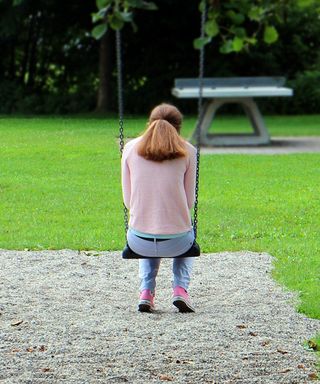Suicide
When Does Suicide Happen?
An examination of suicide timing.
Posted May 9, 2019 Reviewed by Matt Huston

Around the globe, about 800,000 people die from suicide, each year. While health professionals and others cannot prevent all suicides, evidence suggests suicide can be prevented, and effective prevention strategies already exist.
Efforts to prevent suicide and research on suicide prevention have focused on the reduction of access to methods of suicide1 and risk factors, such as past suicide attempts and being diagnosed with a mental illness (in particular a mood disorder like depression),2 but it has also examined the timing of suicide. For instance, a recent study by Tian and colleagues, published in the April-June issue of Archives of Suicide Research, has evaluated the seasonal, weekly, and daily patterns of suicide in 18 U.S. states.3
Sources of data on suicide
Previous research on patterns of suicide timing in the U.S. has been frequently based on the U.S. Vital Statistics System data. But a more comprehensive source of data, which the present investigation utilized, comes from the U.S. National Violent Death Reporting System (NVDRS). The NVDRS collects information on suicide timing and, unlike the U.S. Vital Statistics System, relies on multiple sources of information (e.g., death certificate, medical examiner, law enforcement) to identify suicides.
In 2003, the NVDRS was collecting data on violent deaths from only seven U.S. states, but presently it gathers information on violent deaths from 40 states.
Tian and colleagues used NVDRS data from the following 18 states: Alaska, Colorado, Georgia, Kentucky, Maryland, Massachusetts, Michigan, New Jersey, New Mexico, North Carolina, Ohio, Oklahoma, Oregon, Rhode Island, South Carolina, Utah, Virginia, and Wisconsin. Therefore, the study covers nearly “one-third of the U.S. population.”3
What counts as suicide?
The U.S. National Violent Death Reporting System (NVDRS) defines suicide as death caused by an intentional (based on most evidence available) use of force directed at oneself.
This would include the deaths of people who meant to injure but not kill themselves, deaths “associated with risk-taking behavior without clear intent to inflict fatal injury but associated with high risk for death (e.g., ‘Russian roulette’),” and finally, “deaths involving only others’ passive assistance to the decedent (e.g., supplying the means or information needed to complete the act).” Deaths caused by “substance abuse without the intent of dying and deaths attributed to autoerotic behavior (i.e., self-strangulation during sexual activity)” are excluded.3
Time patterns of suicide
Examining the data, the authors noted that between 2003 and 2014, of 122,000 suicides among those 10 years or older, information on the month, week, and day were available for 85 percent of cases (104,000 suicides). The authors compared this information to data from the American Community Survey to determine if people who died from suicide differed significantly from the general population.
Results showed that those who died from suicide were more often men, 20 years and older, and non-Hispanic White.
Monthly variation
Suicide rates rose starting in March, peaked in September, then fell to their lowest point in December. In both men and women 18 years and older, suicides were more frequent in the March-September period, compared with December.
In those 10-17 years of age, however, rates declined significantly in summer (especially May to July), a finding which may be explained by the lack of academic and social school-related pressures in summer.
Weekly variation
Suicide was more likely to occur in the first week of the month among men and those 18-64 years of age. Possible causes are related to the timing of bill arrivals or job termination—especially in individuals financially struggling and under stress from other sources.
The authors note that women, who are less likely to be primary financial providers in the family, did not show the same pattern of suicide peaks.
Day-of-week variation
In agreement with previous findings, suicides were more likely to occur early in the week (compared to the weekend). This was especially the case in men, those 18-64 years of age, and non-Hispanic Whites.
Reasons for this pattern may be related to the negative effects of work-related competition early in the week and the stress-reducing effects of spending the time with family and friends during the weekends.
Hourly variation
Hourly variations in suicide rates have been studied less frequently, because it is difficult to determine the hour of suicide accurately. In the current study, only 44 percent of 122,000 suicides contained information on the time of day when suicide occurred.
Based on the available data, for the majority, suicide rates reached their highest point in the afternoon—except suicides among people 65 years and older (the morning) and 10- to 17-year-old individuals (the evening). This pattern may be related to the times at which individuals are typically alone.

Concluding thoughts
To help prevent suicide, we can consider many potential sources of information. The present study found that suicide is more likely to occur in the afternoons, early in the week, beginning of the month, and in spring and summer. These patterns are likely related to various biological, social, and environmental factors.
If you are in a crisis and are considering suicide, please know that there are resources available that can help you find better options, so call 911 or the Suicide Prevention Lifeline at 1-800-273-8255.
Facebook Image: LightField Studios/Shutterstock
LinkedIn Image: lunopark/Shutterstock
References
1. Curtin, S. C., Warner, M., & Hedegaard, H. (2016). Increase in suicide in the United States, 1999-2014. NCHS Data Brief, 241, 1–8.
2. Schwartz-Lifshitz, M., Zalsman, G., Giner, L., & Oquendo, M. A. (2012). Can we really prevent suicide? Current Psychiatry Reports, 14, 624-633.
3. Tian, N., Zack, M., Fowler, K. A., & Hesdorffor, D. C. (2019). Suicide timing in 18 states of the United States from 2003–2014. Archives of Suicide Research, 23, 261-272.




